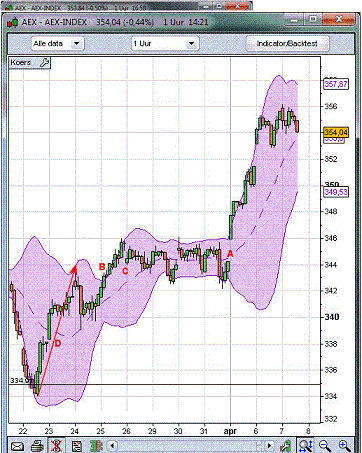Contents:

Olfactory Indicators are categorized by a change in the smell when subjected to acidic or basic solutions. These generally signify the results of a change in the colour of the solution. For example, methyl yellow, which is a chemical Indicator, turns the alkaline solution yellow. Some of the frequently used chemical Indicators are Litmus, phenolphthalein, methyl orange, and methyl yellow.
Ability to titrate the amount of ions available in a living cell. Complexometric titration is widely used in the medical industry because of the micro litre size sample involved. The method is efficient in research related to the biological cell. There are three factors that are important in determining the magnitude of break in titration curve at end point. Ii) The reaction should be practically instantaneous.
FAQs on Acidic-Basic Indicators
They are additdefine acid base indicatorally used to gauge pH values and for attention-grabbing colour-change science demonstrations. Titrations involving sturdy acids and weak bases have an equivalence level in the acidic region of the pH scale. It is clear that it is not necessary that the color of an acid base indicator is the same in all alkaline solutions. That the color of an acid base indicator be the same in all acidic solutions.
- When turmeric stains on our garments are exposed to soaps or detergents in laboratories and at home, the yellow colour of the stains turns crimson.
- The \(\) meter is a device used to measure the \(\) of a solution.
- These are used for titrations based on a redox reaction; the potential of the working electrode will suddenly change as the endpoint is reached.
- Whereas, when mixed with a solution containing a base, the smell of the indicator fades away and cannot be detected.
Methyl orange gives pink colour with acid solution and yellow colour with base solution. Turmeric is a natural indicator, as soap is basic in nature, so the action of turmeric changes the color of stain into red. A substance which reacts with a base to form a salt is called an acid. An indicator is a ‘dye’ that shows a change in colour when brought in contact with acids and bases. This tells us whether the substance we are testing is an acid or base with respect to the change of colour.
Information provided about acid base indicator:
When those electrons jump around in their orbits, they absorb certain colors of the light spectrum and reflect/let pass the rest, so we see a change of color. Soap, milk of magnesia and limewater turn turmeric red and the china rose green. Certain chemicals are used to identify the substances called indicators. The color change is due to the interconversation of one tautomeric form into other. It is a very weak base and can be represented as MeOH. Students obtain the skill to safely handle the acids and bases in the lab.
Many industries use the universal https://1investing.in/ to determine the quality of their products. Any industry dealing with chemicals falls into this category, mostly chemical products and pharmacy product manufacturers. All chemistry and bio labs will have large stocks of the universal solution in store, and you may find some at hospitals as well. It turns red under pH 4.4 and yellow above pH 6.2, but anything beyond those values remains more or less the same. If, suppose, you were working with a strong acid and you were expecting to reduce its acidity a little bit, then methyl red won’t be able to help you figure that at all. These chemicals are called halochromic compounds, meaning that they exchange electrons with H+ or H3O+ ions.
Study of Utility of Basic Arterial Blood Gas Parameters and Lactate … – Cureus
Study of Utility of Basic Arterial Blood Gas Parameters and Lactate ….
Posted: Tue, 03 May 2022 07:00:00 GMT [source]
Acid-base indicatorsexist in two tautomeric forms having different structures which are in equilibrium. One form is termed benzenoid form and the other quinonoid form. For instance, chemical Indicators determine whether the sterilant gets deep into the objects meant to be sterilised.
Action of Base:
They smell in acidic samples, however, they lose all of it in bases. Learn more about these chemical substances as we go through all the concepts and notions related to them. Students acquire a general understanding of the common requirements to perform this experiment & how to arrange it in the lab. PH is defined as the negative logarithm of hydrogen ion concentration in moles/ litre. Indicators are used to find out how shortly a course of is happening or how shut a course of is to completion.

A solution of china rose turns green in a basic solution, and bright pink or magenta in an acidic solution. PH curve of weak acid and strong base is vertical over the approximate pH range 7 to 11. So phenolphthalein is the suitable indicator for such a titration.
Acids when dissolved in water release large amount of heat. If water is added to concentrated acid then the heat generated may cause the mixture to splash out and cause bums. Hence to avoid burns acid must be added drop wise into water with constant stirring. Laboratory machines and instruments ‒ stirrers, hot plates, precision balances, test kits, pH meters, water bath, incubator, microscopes, etc. PH curve of sodium carbonate with HCI shows two inflection points (Fig. 10.5).
The rain which contains a higher level of acid than normal is called acid rain. Acids are generally mixed with water to dilute them. They are found in various types of plants and animals.
This is why the best DM water would have a value as close to 7 as possible. Normal drinking water out of RO machines range around pH 7.2 to 7.5. You should note that all of this depends upon the temperature of the solution ‒ with an increase in heat, the pH value of the same solution can drop. This can be done with a proper laboratory setup, testing the solution’s electrical charge at the positive pole in an electrolytic cell. But that kind of stuff is not only costly, but it is prohibitively complicated as well. As the point lies between 3 to 5,methyl orangecan be used.
The Fed releases the beige guide eight occasions a year, simply before their determination on interest rates. The public has a chance to read over the report and predict what the controller of rates has in store. Acid-base indicators are chemical compounds used to determine whether an aqueous resolution is acidic, impartial, or alkaline.
Thus, these two indicators can be used to identify the solution as acid or base and hence also called acid-base indicators. Vanilla Essence – In an acidic medium, vanilla essence retains its smell but loses it in basic medium. This helps to identify whether a substance is acidic or basic in nature. China Rose – China rose is a natural indicator that turns an acidic solution to dark pink or magenta colour and basic solution to green. There are several chemical compounds all around us utilised to make a variety of goods that we use daily. The majority of the chemicals are either acidic, basic, or neutral in nature.

From this students learn about properties of acids and bases. Students will explore indicators of acids and bases. Students can also learn more about salts, preparation and their properties. In each case 25 mL of the acid (N/10) has beentitratedagainst a standard solution of a base (N/10). Eachtitration curvebecomes almost vertical for some distance (except curve 10.4) and then bends away again. This region of abrupt change in pH indicates the equivalence point.
The undissociated type of the indicator is a unique color than the iogenic type of the indicator. A pH indicator is a substance that it changes its colour in response to a chemical change. An acid-base indicator changes its colour depending on the pH (e.g., phenolphthalein). A drop of indicator solution is added to the titration at the start; at the endpoint has been reached the colour changes. It is a chemical reagent used to recognize the attainment of end point in a titration. After the reaction between the substance and the standard solution is complete, the indicator should give a clear colour change.
Raw mango, raw grapes, lemon juice, orange juice, curd, sour milk, vinegar and tamarind , etc., are sour in taste due to the presence of acids in them. Turmeric is used as indicator in the form of turmeric paper. This reaction is possible only with reactive metals like sodium and potassium. Acid-base indicators are used to measure the acidity of water in a swimming pool. An indicator should remain chemically inert and must not degrade in the whole reaction. It should be chemically pure and must not react with other substances in the solution that has to be tested.
Each indicator attains a unique colour when subjected to a solution. For example, litmus imparts red colour in acidic medium and blue colour in basic medium. Indicators are substances whose solutions change color due to changes in pH. These are called acid-base indicators. They are usually weak acids or bases, but their conjugate base or acid forms have different colors due to differences in their absorption spectra. In between these color endpoints, in the pH range four.four to 6.2, the colour is orange. Phenolphthalein is commonly used as an indicator in acid-base titration experiments within the chemical laboratory.
